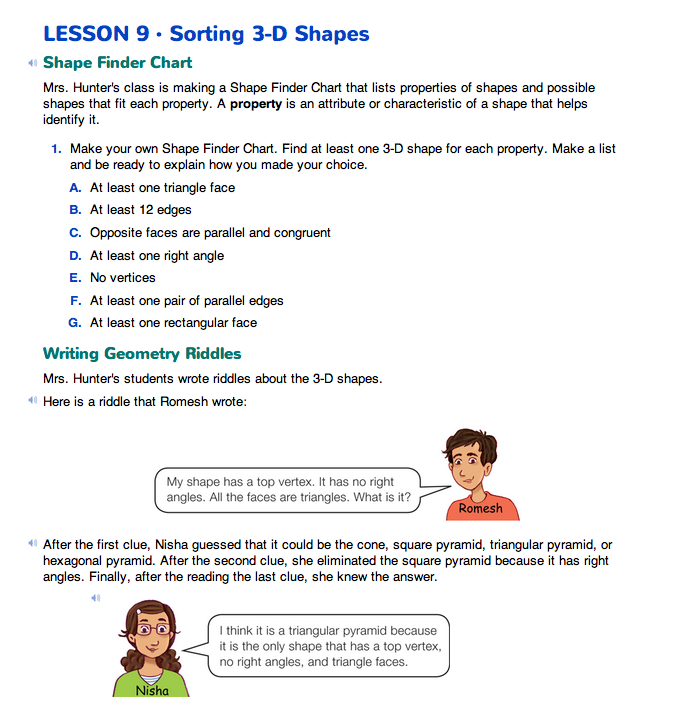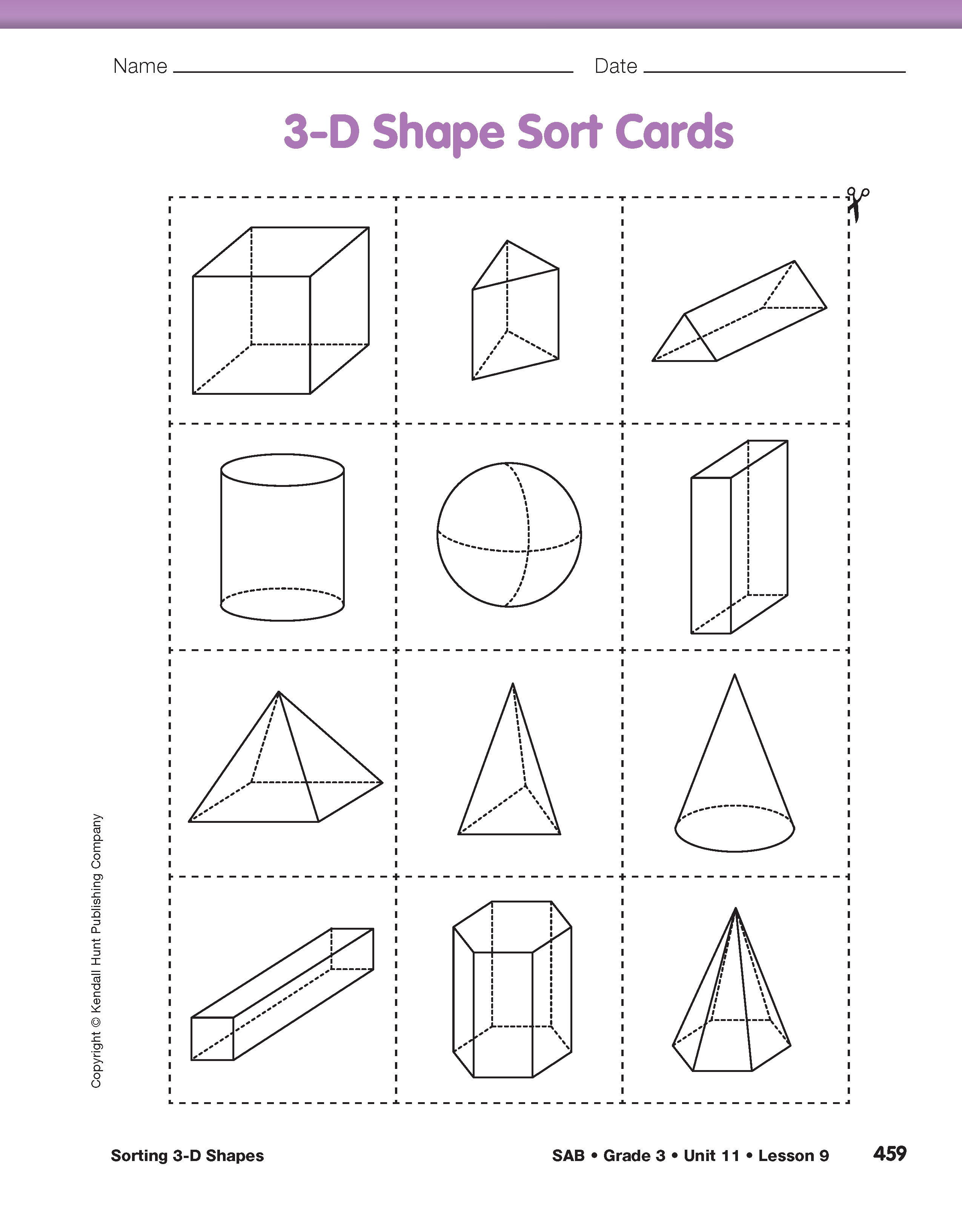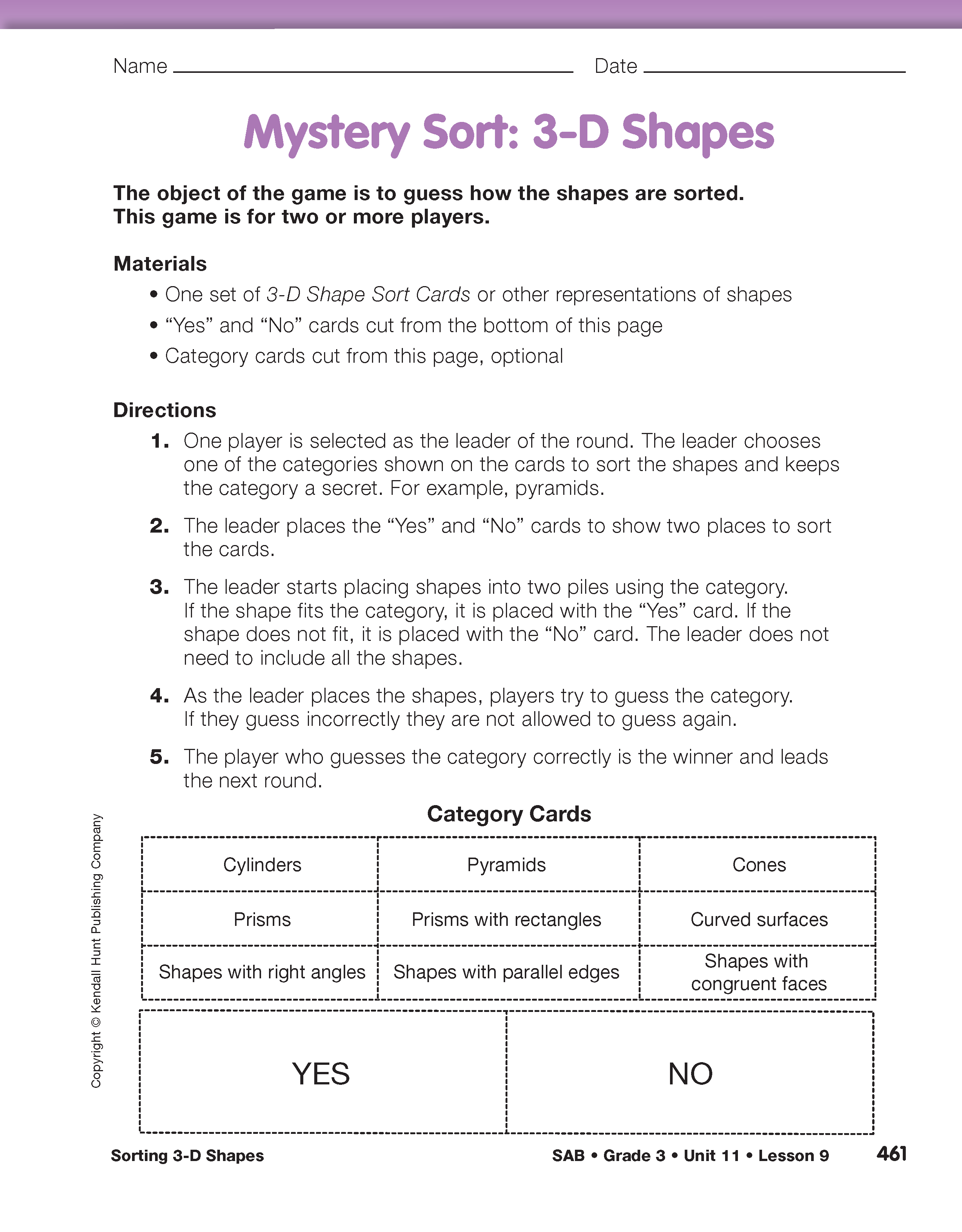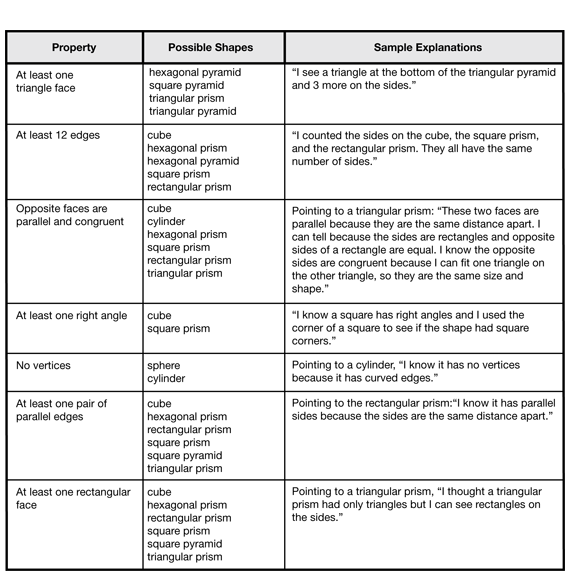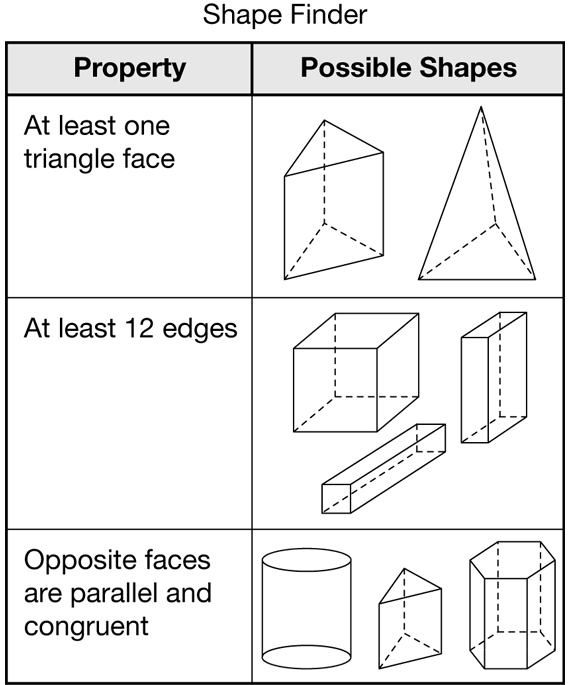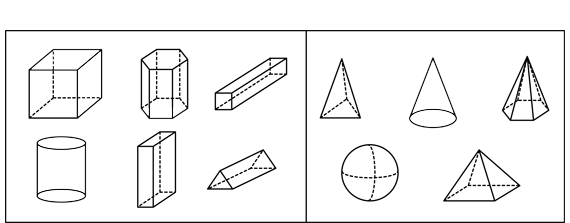Sorting 3-D Shapes
Est. Class Sessions: 2–3Developing the Lesson
Part 1. Analyzing Properties of 3-D Shapes
Build a Shape Finder Chart. Display a set of Power Solids® so the set is visible to the class. Students should be ready to write down the possible 3-D shapes that fit a particular property.
Display the Shape Finder chart you prepared and explain:
Have students read the Shape Finder Chart section on the Sorting 3-D Shapes pages in the Student Guide.
Say:
Have students work in pairs to find at least one shape that has each property and prepare explanations for their choices. Use Figure 2 to check students' responses.
For each property, have students demonstrate how they decided which shapes have that property and tape the pictures of the shapes under the “Possible Shapes” column on the Shape Finder chart. Use the shapes from the five sets of the 3-D Shape Sort Cards Master you prepared. The table in Figure 2 provides a list of properties, examples of shapes, and possible explanations for identifying each property. It lists some properties to use on the Shape Finder chart, but you may want to come up with other properties that are not listed.
The Shape Finder chart will compile a record of the properties and corresponding shapes that students can use in the Guess My Shape game. See Figure 3 for the beginning of a sample chart.
It is not necessary for the class to find every shape that has a given property. However, continue the discussion long enough to find different shapes with the same property.
Play Guess My Shape. Keep the 2 sets of Power Solids® on display and the Shape Finder chart posted so students can refer to them to play Guess My Shape. Model how to play the game by engaging the whole class in a group game using the display set of the Large 3-D Shapes Master. Select a shape and keep the shape a secret. Students take turns asking “yes” or “no” questions using properties and characteristics of the shape (e.g., number of vertices). They are not allowed to point to a shape and ask, “Is this the shape?” Rather, they should continue to ask questions about the shape's properties until the choices are reduced to one shape. Students can jot down and change their predictions of the solution on paper as properties are affirmed until the shape is revealed. You may want to limit the number of “yes” or “no” questions students can ask or keep a record of how many questions they ask before they guess the shape. Sample Dialog 1 is an example of a class discussion about a triangular prism.
Have student pairs or small groups play the game using two sets of 3-D Shape Sort Cards. One set of cards is stacked face down on the playing surface and the other set is used as a reference for members of the group. Students take turns being the leader until each has had a turn. The leader looks at the top card from the face-down pile keeping the shape a secret from the other members of the group. The other students follow the “yes” or “no” questions procedure until the shape is guessed and the leader reveals the hidden shape.
Conduct a class discussion in which students tell how they determined their solution for each hidden shape. Encourage students to explain all the possibilities they were considering and how they eliminated some before making a final choice.
Mystery Sort. Begin this part of the lesson by giving student pairs time to explore how they can sort the shapes on the 3-D Shape Sort Cards page in the Student Activity Book into two groups.
Say:
Give pairs about ten minutes to sort their shape cards. As students work, talk with them about their sorts. How they choose to sort the shapes is up to students at this point. However, it is important that they are able to give reasons for the sort based on the properties of the 3-D shapes.
Next, use the display of 3-D Shape Sort Cards or the Large 3-D Shapes Masters (for a larger display) to do a “mystery sort” and engage the whole class in a discussion of how you sorted shapes into two groups. For example, you can sort the 3-D shapes into “cylinders” and “not cylinders.” See Figure 4.
Ask:
Give students time to play Mystery Sort in pairs. Directions and 3-D Shape Sort Cards are in the Student Activity Book. Using the 3-D Shape Sort Cards, the first partner sorts the shapes into 2 groups and the other partner tries to figure out how the first partner sorted them.















